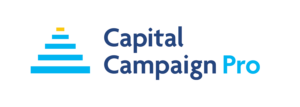Donor Advised Funds: Myths, Facts, and Maximizing DAF Potential

With DAF Day coming up, it’s worth taking a moment to revisit this powerful philanthropic tool and their influence on capital campaigns and major gift strategies.
A Donor Advised Fund (DAF) is simply a charitable savings account. Donors contribute cash or assets, the money is invested, and the donor distributes the funds over time.
Donor Advised Funds (DAFs) Continue to Reshape Philanthropy
Recent reports affirm DAFs continued growth:
- Over 2.5 million DAF accounts now exist in the U.S. (a net increase of nearly 500,000 over the past two years).
- Total charitable assets in DAFs now exceed $250 billion.
- Contributions to DAFs are now 10% of all charitable giving.
While many types of support are fluctuating or uncertain, DAF donors continue to accelerate their generosity. Thus, having a solid DAF strategy is essential for any nonprofit running a capital campaign.
3 Common Myths About Donor Advised Funds
Despite their popularity, there continue to be many misconceptions around DAFs. So, let’s set the record straight on three of the most common myths.
Myth #1: They are New
Myth: DAFs are a new giving tool.
Fact: The first DAF was established in 1931, but their popularity has skyrocketed in the last 10 years.
Myth #2: Only for the Wealthy
Myth: Only really wealthy individuals use DAFs.
Fact: Some DAFs have no minimum initial contribution amount so they’re increasingly accessible for all types of donors.
Myth #3: They Discourage Giving
Myth: DAFs discourage giving because no distributions are required.
Fact: Average DAF payout rates remain above 20%, far surpassing the mandated 5% for private foundations.
The Evolving Role of DAFs in Campaign Strategies
Several current trends are impacting how DAFs might play a role in your campaign.
- DAFs becoming a multigenerational giving tool.
More donors are involving children in their DAF decision-making. For capital campaigns, this means one prospect conversation could expand into an entire family dialogue. - DAFs are gaining digital convenience.
Donors want to recommend grants quickly from online platforms. Nonprofits need to streamline online instructions and add a DAF widget on campaign landing pages. - Like other donors, DAF holders are increasingly focused on impact.
Research shows that DAF holders are directing a growing share of their giving to organizations they believe can demonstrate clear, measurable outcomes.
Positioning Your Campaign to Attract DAF Support
To maximize DAF giving during a capital campaign:
- Proactively ask donors if they give through a DAF.
Many still under-utilize their accounts or are unsure how they can be used in campaigns. - Educate your development team.
Ensure everyone understands how to handle gift acknowledgments, pledge workarounds, and DAF tracking in your CRM. (Remember: a DAF cannot be used to fulfill a pledge, but the DAF owner can use a Letter of Intent instead. Similarly, DAF gifts should not receive the standard acknowledgement with tax language; the donor received a tax deduction when they contributed to the account.) - Highlight the impact opportunity.
Position DAF gifts as a way for donors to activate charitable dollars already set aside, making it easier to say “yes” to transformational campaign support.
DAFs Are No Longer a Side Note
DAFs are no longer a side note in philanthropy — they are a central giving vehicle. With billions of charitable dollars waiting to be allocated, capital campaigns that fail to prioritize DAF engagement risk leaving significant resources untapped.
By approaching DAF donors with clarity, flexibility, and a strong case for impact, your organization can unlock these funds and bring donors’ philanthropic goals to life.
Get Your Campaign Questions Answered
Join our community for these monthly town-hall style discussions and get answers to your most burning questions in real time.



Would like to understand how folks are categorizing the gift – individual or foundation? And recognizing from an accounting standpoint and from a donor list standpoint. Documentation from the DAF managers indicates that we should acknowledge the HOLDER of the account (ie Fidelity Charitable, Morgan Stanley GIFT, etc.) Soft credits???
Here’s the way that Bloomerang recommends handling donations via DAFs or family foundations:
To track indirect donations:
1. Create a constituent account for the donor-advised fund or foundation. This type of account is also known as a pass-through account. For example, create a constituent account named Fidelity Charitable DAF or Wayne Family Foundation.
Tip: If an entity manages multiple donor-advised funds, you can create an organization-type constituent for the entire entity or multiple organization-type constituents for each donor-advised fund.
2. Enter the donation on that account.
3. On that donation, in the Soft Credits section, click the + sign.
4. Search for and select the original donor. This is the individual constituent who gave the money through the donor-advised fund or foundation.
Tip: Apply the soft credit for this donation to only one household member. To avoid double counting or undercounting in household analytics, do not apply the soft credit to multiple household members or divide the soft credit between household members.
5. Click Save.
6. If the individual constituent has an active pledge, you can edit the soft credit to apply it to the pledge. For legal guidance related to donor-advised funds and pledges, consult the company that manages the donor-advised fund, and IRS guidelines.
Acknowledge Indirect Donations
You can send an acknowledgment email or letter to thank a donor for an indirect donation. When you create the email or letter, select Acknowledgement as the purpose.
Make sure the acknowledgment email or letter doesn’t include tax receipt information. Donors get a tax receipt for their donation from the donor-advised fund or foundation.
Tip: It’s typically not necessary to send an acknowledgment email or letter to the donor-advised fund or foundation unless the fund or foundation requested one.
I would assume that other fundraising CRMs have similar capabilities to track Soft Credits in this manner.